Our History
1960s
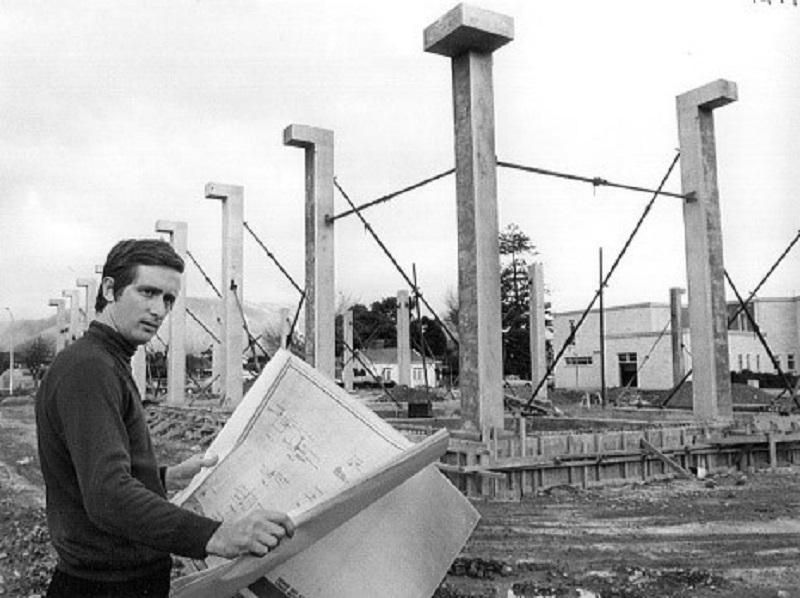
The Dowse under construction with future Director Jim Barr. Source Unknown.
1963
The Hutt Art Society and Percy Dowse (Mayor of Hutt City from 1950 - 1970), seed the idea for a public art gallery with the intention of injecting more culture into the rapidly growing city. In the 1960s Lower Hutt was known for industry, state housing and middle-class hilltop subdivisions. However, Dowse, a Fabian socialist, believed that all people should have equal access to swimming pools, libraries, halls, sports grounds, museums, and art galleries. Despite popular opinion that investment would be better spent on pensioners flats and playgrounds, the Hutt City Council voted in favour of an art gallery. Located on the corner of Laings Road and Myrtle Street, construction began in 1968 with the new gallery covering 10,000 square feet on a site that offered scope for future expansion. The interior featured two spiral staircases leading from the foyer to two small galleries located above the entrance. The building, designed by R.C. Muston of Structon Group Architects was a bold architectural statement for the Hutt.
1970s
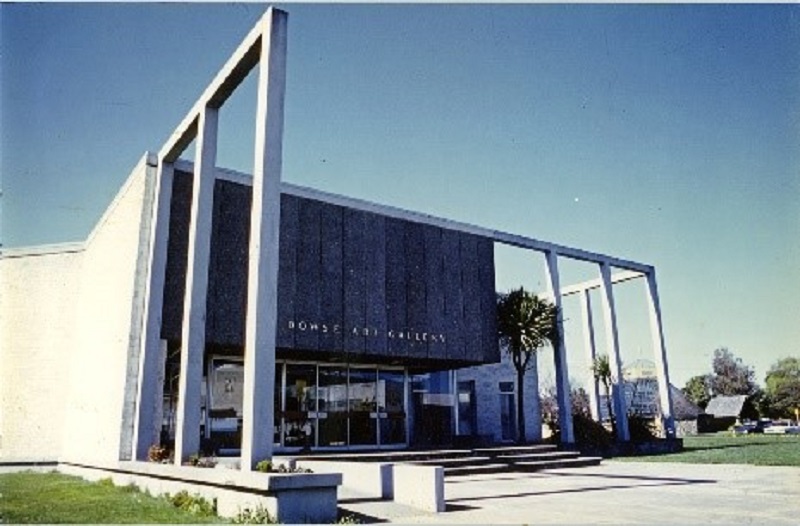
The Dowse c. 1971. Source Unknown.
1971
The Dowse Art Gallery was opened on the 31st of May by Governor-General Sir Arthur Porritt. David Millar, the first director of the Dowse, believed that the institution was "a living part of the community," that would be "a creative force to promote the graphic and other arts and link art with industry." The opening exhibition was called Artists of the Wellington Province: 1839 – 1971 and was curated to be "an introduction for the people of the city to the main trends of New Zealand's art." Beyond linking to the local and broader provincial creative scene, the Dowse Art Gallery also mounted a solo exhibition of Māori artist Robin White's artworks in its inaugural year of programming. This signalled the start of the Dowse's continued commitment to pioneering the presentation of art forms and artists that are often under-represented and underappreciated in the mainstream art world.
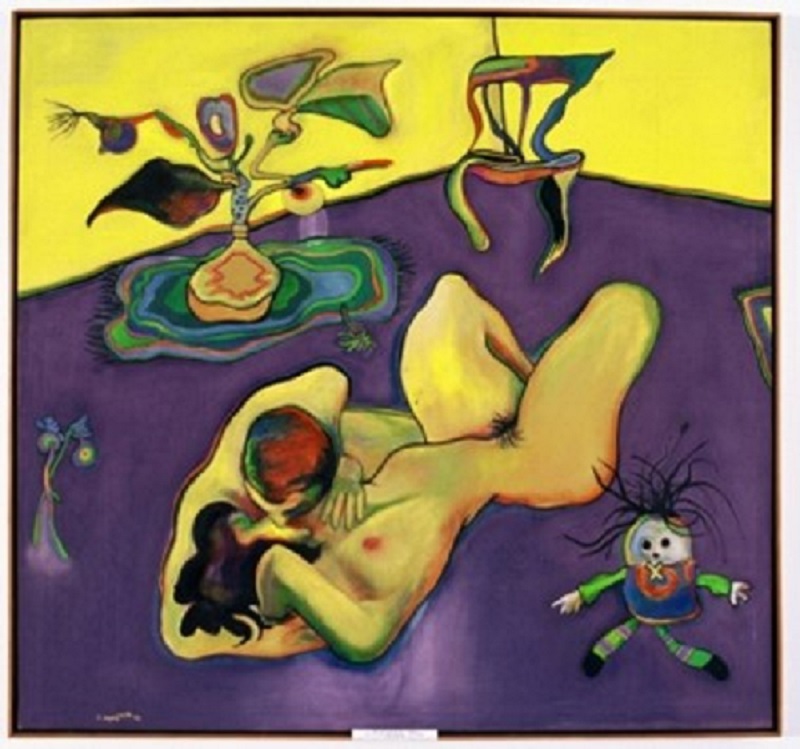
David Armitage, (Look at me. I looked. She rose into detail forever )(1972), Collection of the Dowse Art Museum, gifted by the United States Ambassador and Mrs. Kenneth Franzheim II 1972.
1972
The Dowse Art Gallery came under fire for displaying David Armitage’s painting (She said, "Look at me". I looked. She rose into detail forever) (1972), which depicts a nude couple making love. Patricia Bartlett, anti-pornography campaigner and leader of the Society for the Promotion of Community Standards, described the work as "filthy". Bartlett convinced Ron Muston, the architect and advocate of the Dowse, that the artwork should come down. Muston then persuaded the mayor of Lower Hutt, John Kennedy Good of the need for its removal, only to change his mind, leaving the mayor angry and without support. The artwork was ultimately put back up. This event was the first example of the Dowse courting controversy by pushing the boundaries and expectations of both art and craft.
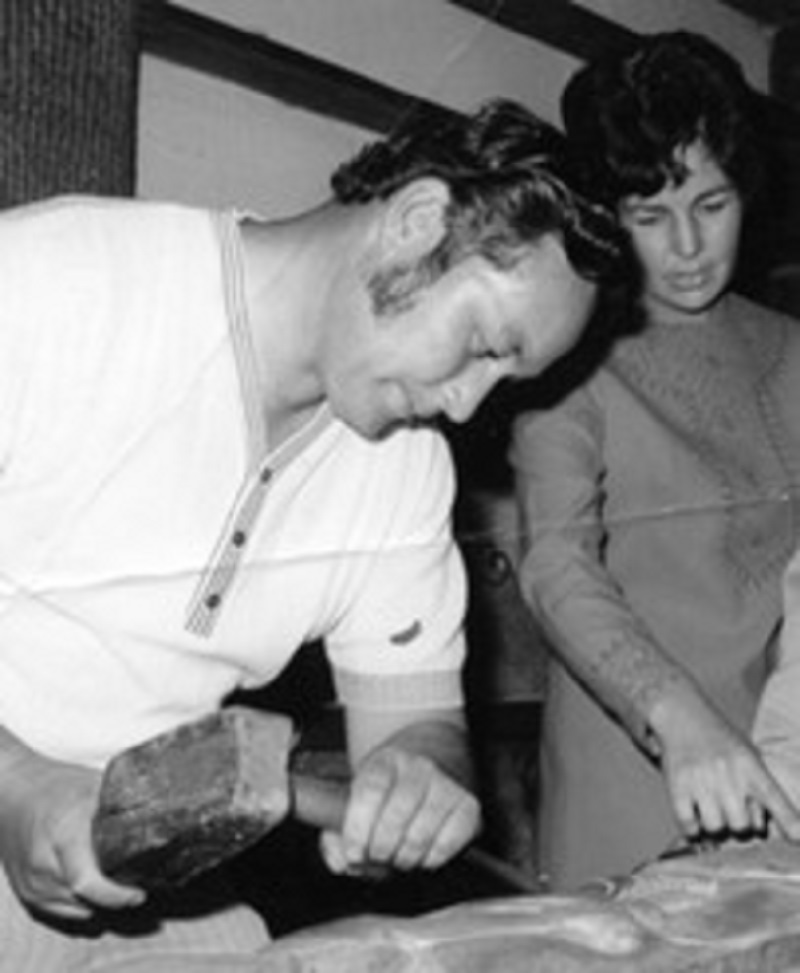
Rangi Hetet and Erenora Puketapu-Hetet. Source unknown.
1975
Local Māori carver, Rangimārie (Rangi) Hetet, was commissioned to create two carvings to celebrate the Dowse’s 5th anniversary by The Friends of Dowse Art Gallery and Museum. Hetet’s panels represented the Te Āti Awa chief Honiana Te Puni-kokopu, symbolising friendship between Māori and Pākehā in Te Awakairangi Hutt Valley. They also illustrate the arts of whakairo rākau (carving) and raranga (weaving). The Friends of the Dowse was one of the largest Friends groups operating at the time with close to 1,000 members. Alongside Hetet’s carvings, the Friends commissioned and purchased other artworks including a tapestry by Judy Patience for the foyer in 1974, and a painting by Toss Woollaston, Port Nicholson from Korokoro in 1979. These works, alongside the earlier donations by the Hutt Art Society of around 80 artworks, became the foundation for the Dowse collection.
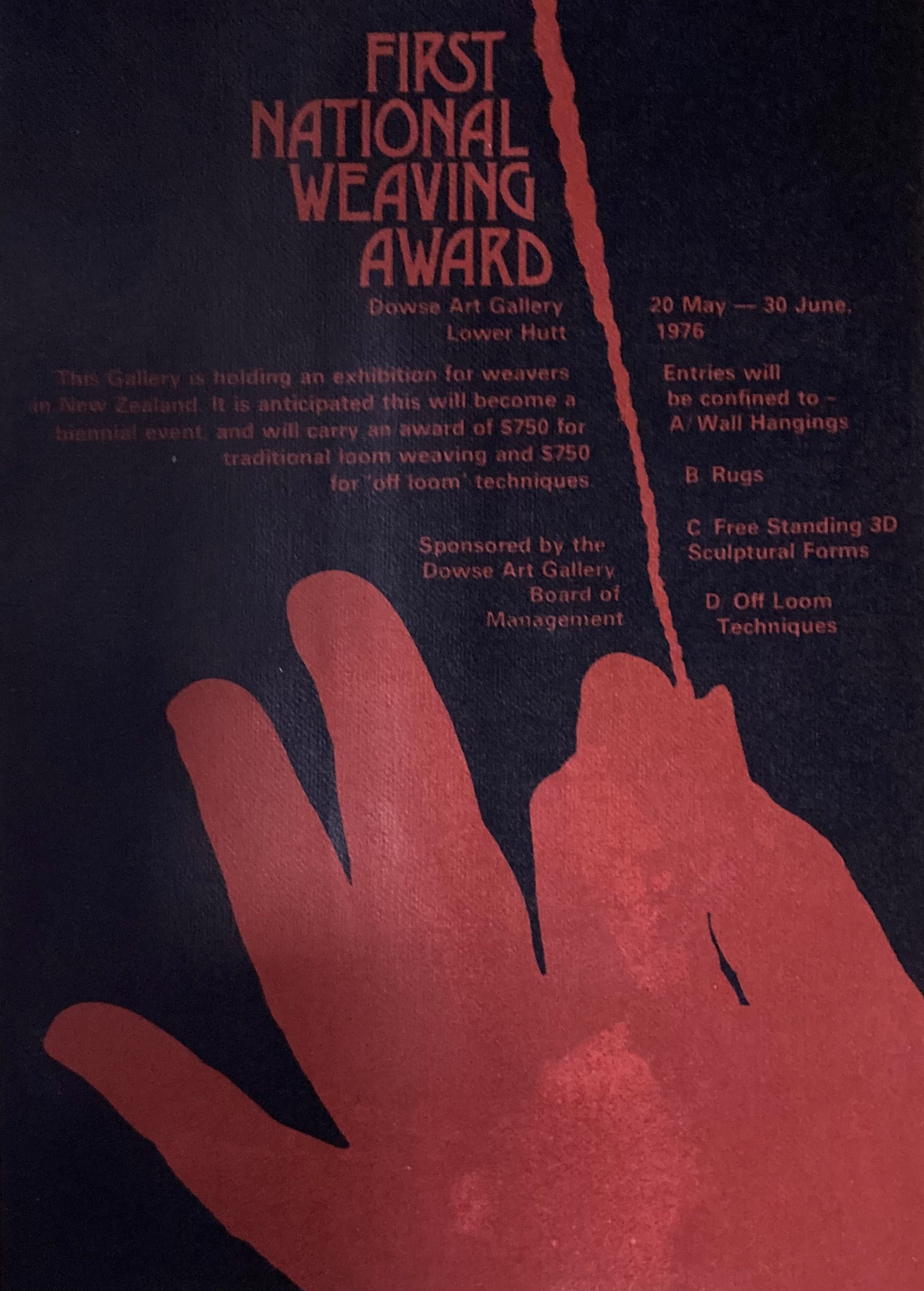
Flyer for the First National Weaving Award in 1976. Image provided by Susan Millar.
1976
Before leaving the Dowse to become the Deputy Director of the Sydney Art Gallery, Millar appointed Michael Sanden as the Dowse’s first education officer. Sanden explained that “As art education officer, my duties will include public workshops and art classes for children and adults, centred in and around the Dowse Gallery.” Under Sanden and the newly appointed Director Jim Barr, the Dowse’s engaging approach to education became a highlight of the programme.
Throughout the 1970s the Dowse established itself as a leader in the exhibition of fibre arts. Director Jim Barr credits Betty Logan, an administrator who worked at the gallery, with the first forays into textile craft. This led to the establishment of the First National Weaving Award and accompanying exhibition in 1976, as conceived by Logan. The award was created with the intention of elevating examples of the craft beyond the hobbyist level.
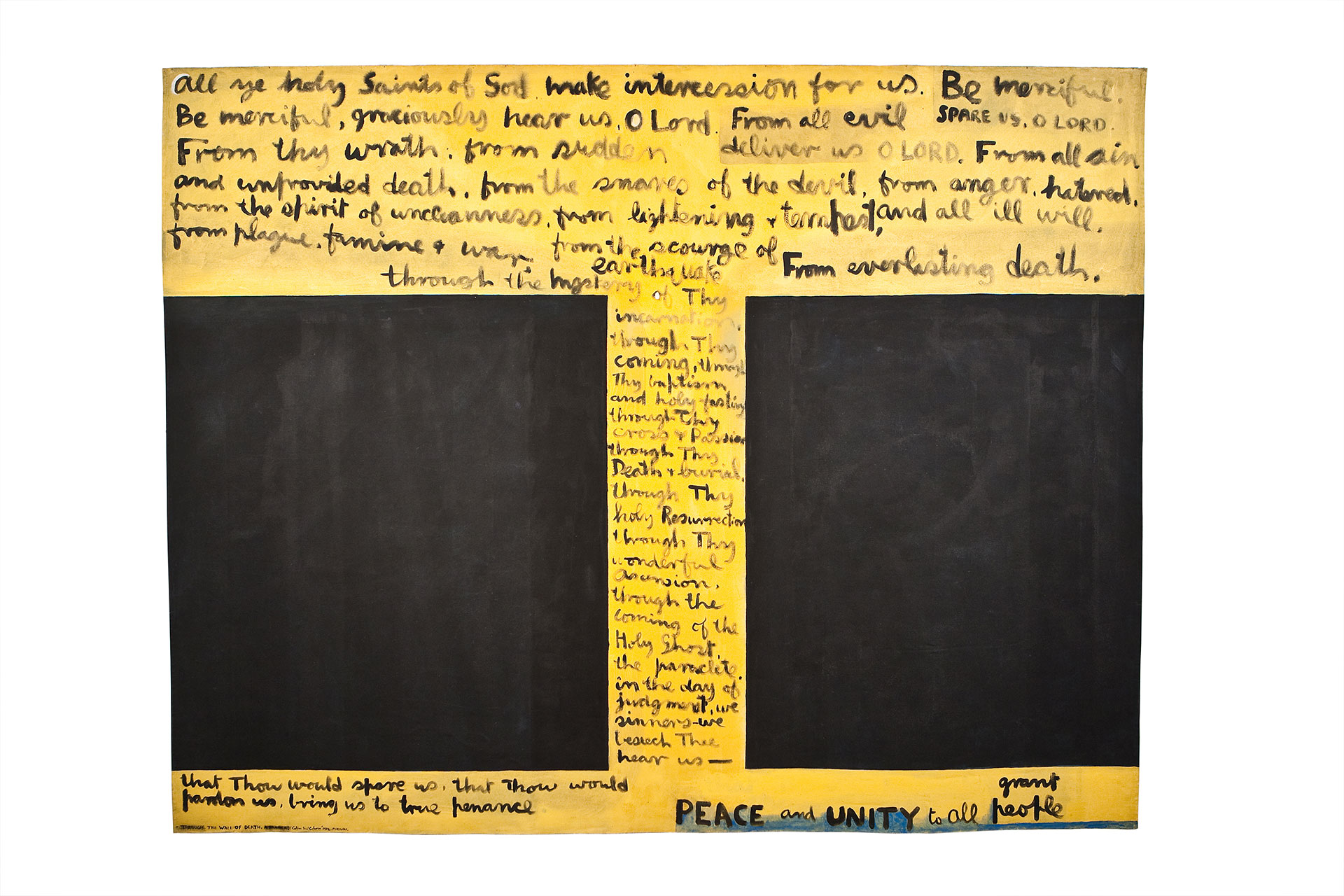
1978
Under Logan and Barr, Through the Wall of Death (1972) by canonical New Zealand modernist Colin McCahon, was purchased with the help of the Queen Elizabeth II Arts Council. This painting stirred strong feelings and led to divided opinions about the value of art. As part of the debate surrounding the McCahon purchase, Barr and disapproving Hutt City Councillor Chen Werry appeared on national television. Werry claimed he could "knock up a Colin McCahon-type painting in his lunch hour." His attempt was judged by an external expert who called it "not a bad effort". Through the Wall of Death (1972) would continually reappear as a political football over the following decades. In 2009 the controversial painting sparked national outrage when the Hutt City Council proposed to sell the painting in an effort to raise funds.
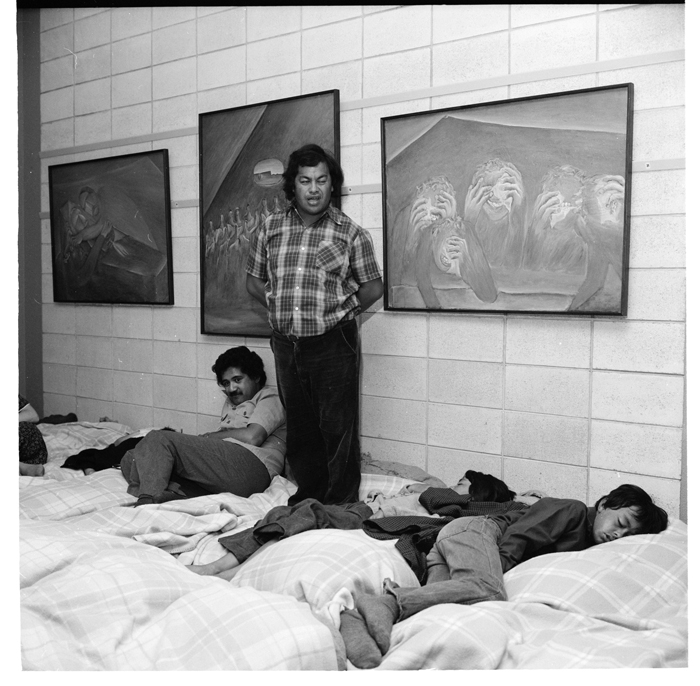
Selwyn Muru's Parihaka exhibition photographed by Ans Westra in 1979. Image by Ans Westra, courtesy of {Suite}.
1979
The 1970s would end in two significant achievements for the Dowse which established it as a gallery that was both attuned to demands for local representation and a space for locals to encounter ground-breaking international art. The first of these achievements was Selwyn Muru’s significant solo exhibition Parihaka. This show paved the way for the Dowse Art Gallery to demonstrate their deep commitment to contemporary Māori art and artists. It featured 37 paintings about the Māori prophet Te Whiti and the events at Parihaka. It opened with a pōwhiri and readings including one delivered by famed poet Hone Tuwhare. A hangi was also laid next to the building, and the gallery space was transformed into a marae with mattresses and bedding for whānau to stay with the artwork overnight. While this went some way to making the Dowse a warmer and more accessible space for Māori, it was obvious that it had some way to go; many of the manuhiri (guests) packed up and left in the early hours of the morning, saying they felt uncomfortable in the space.
The second achievement was a major international exhibition of renowned American photographer Diane Arbus. The exhibition generated a lot of publicity and controversial headlines and polarising views. Hosting the exhibition, which attracted over 23,000 visitors, solidified the Dowse as a gallery that could compete with the offerings of larger urban centres.
1980s

Mary-Louise Browne, Grand , 2022. Install photo by Mark Tantrum.
1981
Under the directorship of James Mack (Galvan Kepler Macnamara 1941-2004), the Dowse Art Gallery is renamed the Dowse Art Museum to signal a shift in focus towards social issues, expanding views of art and craft as well as including more Māori art in the exhibition programme. The tenure of Mack would also be marked by frequent appearances of the Dowse in the media as well as a collection refocus on "contemporary New Zealand fine arts, executed in materials traditionally associated with the crafts." Mack is remembered for his flamboyant personality and like the previous Director Jim Barr, was fearless in courting controversy. A favourite saying of James Mack was, "the public will forgive you anything as long as you're not boring."
In the 1980s, the division between studio craft and fine art became more pronounced with ceramics, textiles, glass, woodwork and jewellery featuring less in exhibitions and collections in New Zealand art institutions as the decade progressed. Mack saw the inclusion of craft as a kind of rebellion against the mainstream and seized upon this idea as a core part of the Dowse's mandate. A review of the Dowse from 1988 described the programming as “a typical Mack pack of craft and biculturalism.” His legacy can still be seen at the Dowse with Mary-Louise Browne's Grand, which occupied The Dowse courtyard from August 2022 to May 2023. This pays tribute to James Mack , who employed Mary-Louise Browne in her first gallery role at The Dowse 40 years ago.
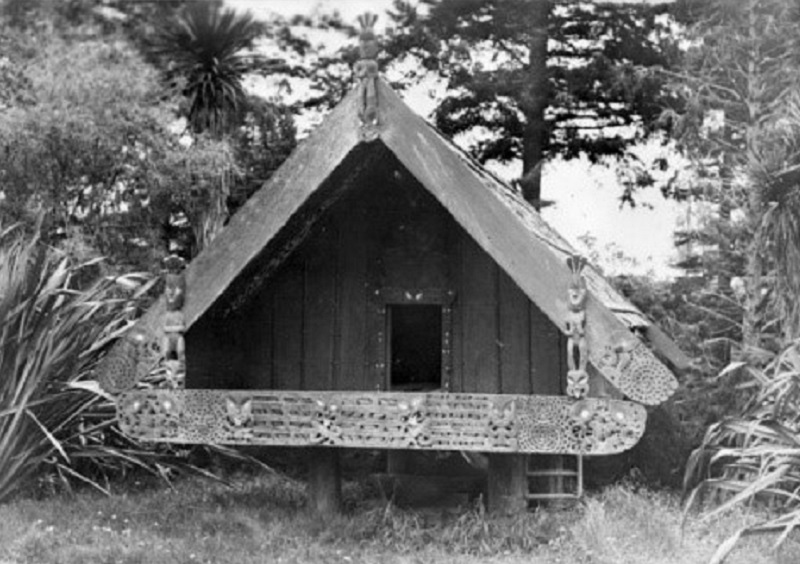
Nuku Tewhatewha before its installation in the Dowse.
1982
A new gallery wing was opened with many changes to the 1971 floor plans, but little insight into the needs of a gallery and museum building. The large corner windows let in damaging UV light, and light tracks were positioned 7 metres above the ground, making it a dangerous task for staff to change light fittings. The previously disused Museum wing built some years before re-opens with the return of the pātaka whakairo Nuku Tewhatewha, to Te Awakairangi Hutt Valley. Nuku Tewhatewha was built at Te Mako (today called Naenae) in 1856 after being commissioned by Te Āti Awa rangatira (chief), Wiremu Tako Ngātata.
As far as we know, it is the only complete remaining pātaka of seven or eight known as Ngā Pou o te Kīngitanga (The Pillars of the Kingdom) that were carved in support of the Kīngitanga (Māori King) Movement. For more than 120 years, Nuku Tewhatewha was cared for by the Beetham family who believed it was time for it to come back to its place of origin. With a shifting demographic in the city and an increased awareness of its role as kaitiaki (guardian) of this significant taonga, the Dowse would need to change the way it positioned itself in years to come.
1983
In 1982 Robyn Kahukiwa, was awarded a Māori and South Pacific Arts Council grant to undertake a series of paintings celebrating female deities in Māori mythology. The series of eight paintings and related drawings, depicting Te Po, Papatuanuku, Hine-ahuone, Hine-titama, Taranga, Mahuika, Murirangiwhenua and Hine-nui-te-Po, was shown at The Dowse as part of Kahukiwa’s national touring exhibition Wahine toa — ‘women of strength, power, courage’ in 1983. Supported by texts written by the Māori author Patricia Grace, the exhibition would be published in 1984 as a book called Wahine toa: Women of Maori myth.
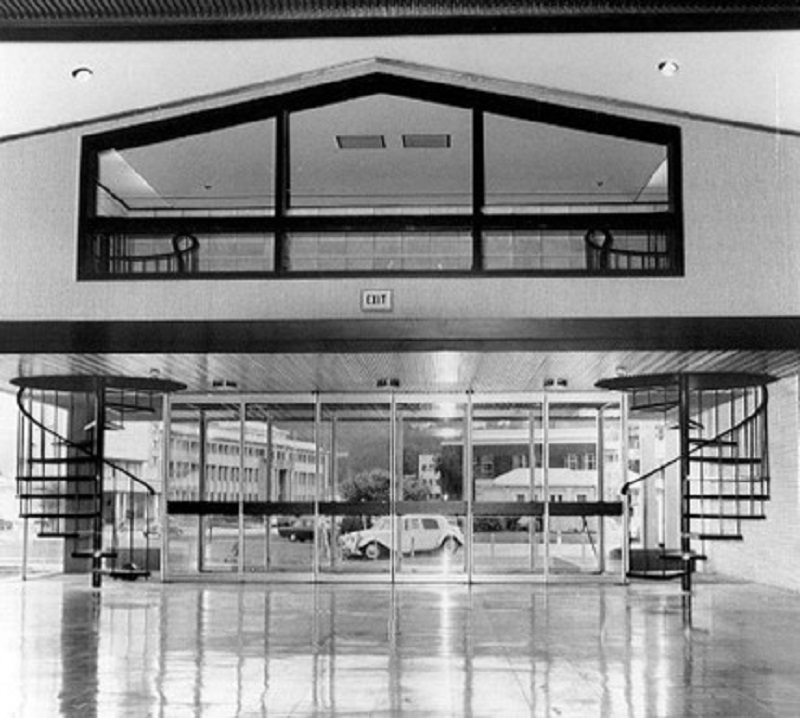
The Dowse’s spiral staircases before their removal in 1984. Hutt City Council.
1984
The 1980s became a time for more developments to the gallery building, mirroring the growing ambition of gallery programming. Plans for a coffee shop and kitchen with an enclosed sculpture court were drawn. Concrete block walls were covered over in the galleries for the improved hanging of artworks. The spiral staircases were removed, and automatic doors were installed.
1988
The new Director. Bob Maysmor, put further emphasis onto the infrastructure of the Dowse, as well as improving the gallery building's logistics and operations. The focus of the Dowse over the next few years would be housing and ordering the collection. An extension was completed which included an office and workshop, a registrar's packing room and a matting and framing room allowing for better collection care and storage.
Photographer Fiona Clark’s project Living with AIDS (1988) was first shown in the AIDS NOW exhibition at the Dowse. This collaborative project followed four HIV Positive New Zealanders, at a time when AIDS was not well understood, and largely seen as an issue only affecting the gay community, allowing homophobia to influence an already emotional and politicised topic. Clark’s project provided insight into the everyday lives of a highly stigmatised group, and included hand-written messages from the participants, three of whom did not survive. This was an important exhibition for the Dowse and the art museum’s tradition of using photography to engage with social issues.
1990s
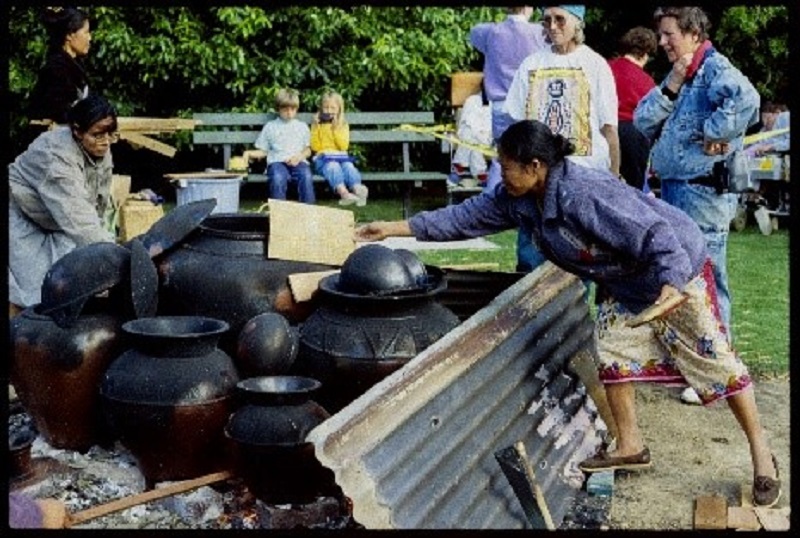
Pots being fired for the Women of Lombok exhibition. Photo by Jess O’Brien.
1992
The Dowse continued its focus on art, craft and social issues, aiming to establish itself as the National Resource Centre for Craft, an idea planted by local community advocates and supported by Maysmor. In a commitment to demonstrate continuities of craft cultures, the exhibition Women of Lombok showcased practitioners flown in from Indonesia through a New Zealand aid programme. They demonstrated their skills in the museum, digging a hole in the lawn outside so pots could be fired in a traditional pit firing.
Thematic exhibitions were also developed which pioneered the highlighting of environmental issues. The Big Green, a multi-media show with hands-on activities allowed visitors to learn about pollution and recycling, well in advance of impending concerns and discussions about climate change.

Chihuly Inc’s Citron Yellow Persian With Black Lip, 1995. Gifted after tour of Chihuly exhibition 1994.
1994
A major exhibition of international contemporary glass artist Dale Chihuly is developed in partnership with other New Zealand venues, including the Christchurch Art Gallery. The exhibition broke attendance records, attracting 35,000 visitors over nine weeks, with visitors queuing past the nearby courthouse. In the 1970s, the studio glass art movement gained traction in New Zealand with former Director James Mack quick off the mark in collecting contemporary glass from some of the leading artists of the day for the Dowse collection. Four years later, in 1998, the Dowse developed a major survey exhibition of New Zealand artist Ann Robinson's glass artworks called Casting Light.

The Friends of The Dowse Coffee and Cake with artist Barry Brickell event in 2013.
1998
The Dowse came under fire from the Hutt City Council for underperforming and was inaccurately seen as a place for "latte-sipping Aucklanders". The council's focus on investing more in roads, rubbish and water at the time did not help. The Friends of the Dowse, led by Doff Gentry, aided in producing a solid backbone and public submission to the Hutt City Council to advocate for the Dowse's relevance within the city.
Tim Walker, formerly involved in the development of Te Papa, which was regarded as a bastion of museum innovation when it opened, is appointed the Director of Dowse to re-energise the Dowse's direction and community engagement.
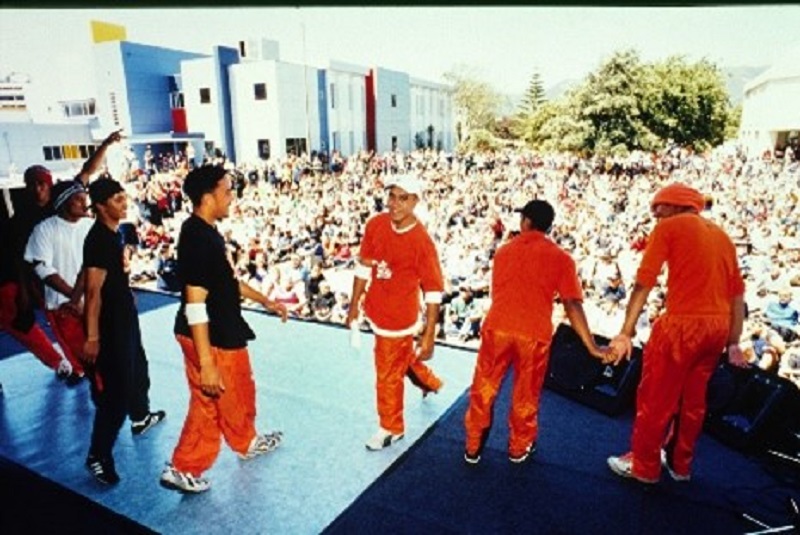
Performers at the 2001 Respect Festival. Source Unknown.
1999
With an ambitious vision to return the Dowse to its role within the heart of the community as a "broad church," strategies to engage newer audiences were developed. The Hutt City population had changed since its initial opening from being seen as a middle-class outpost to a diverse community with a strong demographic of Pacifica and retired Pākehā. The Dowse’s audience had evolved, as did definitions of art, craft and now, design. With this in mind, the first Respect festival, a hip-hop oriented event, was hosted by the Dowse. This event pushed buttons and celebrated underrepresented groups within the community. It was opened by Cabinet Minister Bill English and was the first time an MP had opened an exhibition at The Dowse in more than a decade. To the council's chagrin, the festival featured organised graffiti demonstrations, a tension that would continue in later years with other hip hop, graffiti and street art projects. Ironically the Hutt City Council won a Creative New Zealand award for Respect, and was commended for the increase in visitor numbers by nearly 50 percent and revenue by 600 percent.
2000s
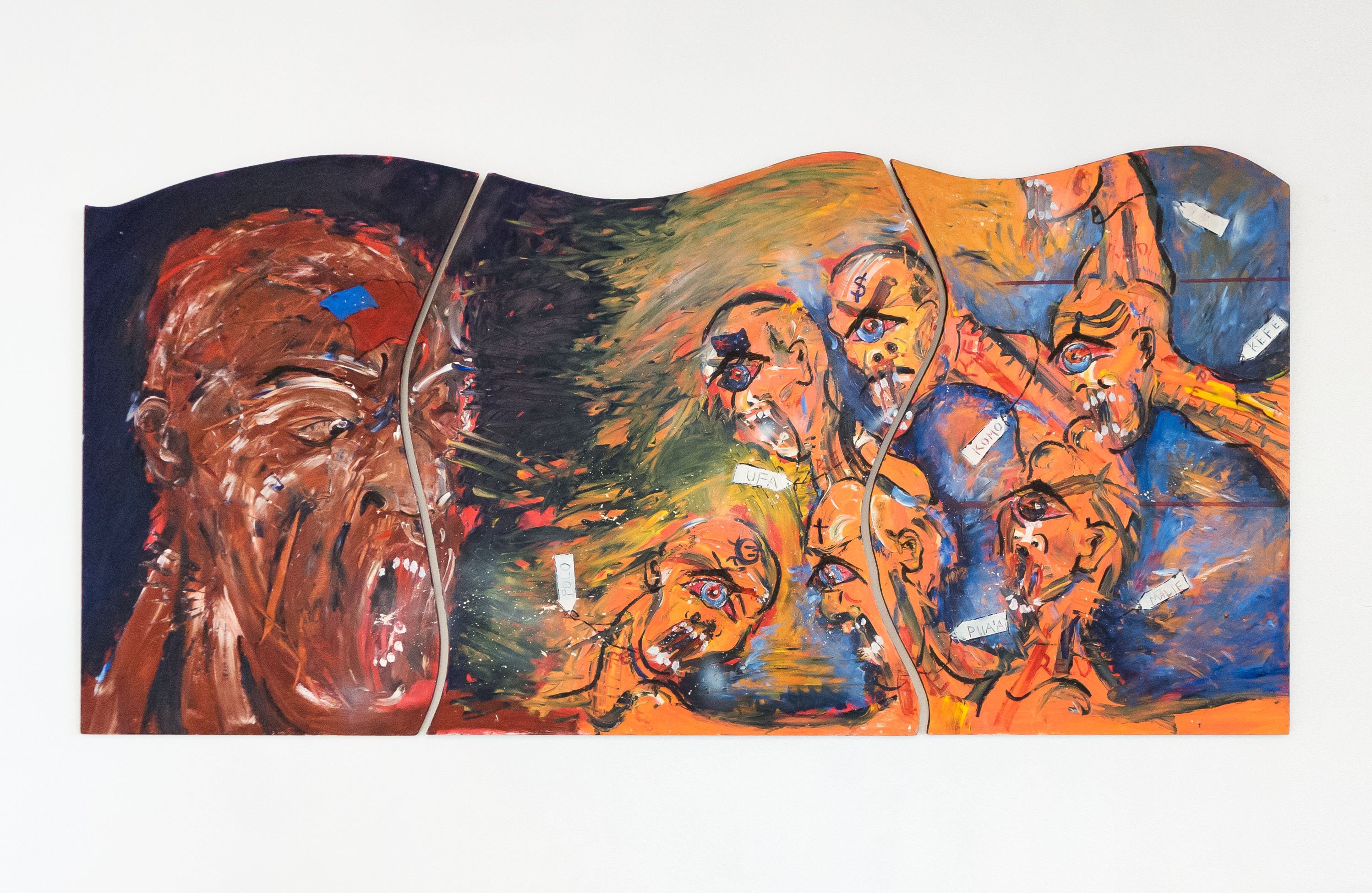
Andy Leleisi'uao, Tired of Silence , 2000. Image courtesy of artsdiary.co.nz
2001
Building on the Pacific community's representation through the Respect Festival, The Dowse staged a major solo exhibition of paintings by artist Andy Leleisi'uao called Tired of Silence. To accompany the exhibition, a series of fono (gatherings) on complex community and religious issues related to Pacific Island communities were planned as part of the public programming.
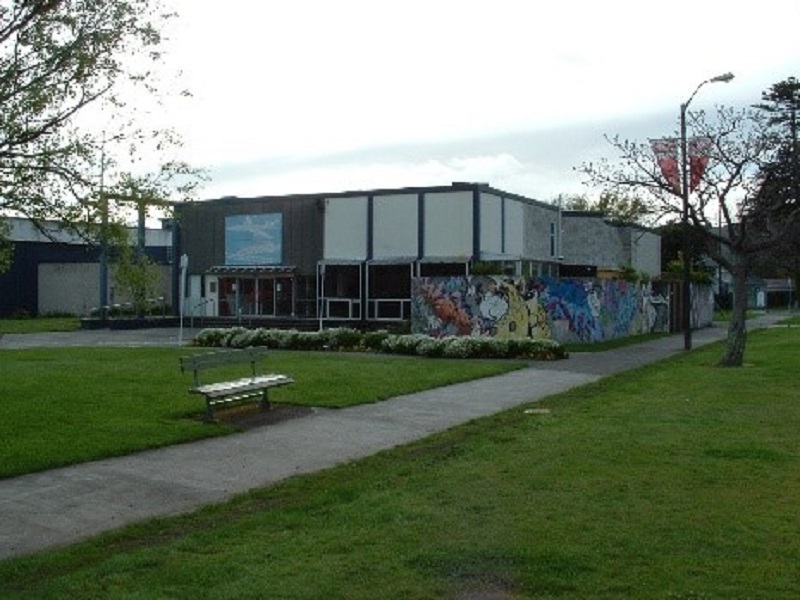
The Dowse before the redevelopment. Image provided by Athfield Architects.
2003
A major fundraising campaign initiative by the newly established Dowse foundation raised two million dollars. This major sum was matched with a grant from local and national government. Through these efforts, the Dowse was able to plan a significant building redevelopment and in 2005 closed for two years. During this time a Māori curator role was also developed as part of the museum staff structure, one of only a handful of similar roles across the country. Although short-lived, the inclusion of a Māori curatorial position signalled the ongoing commitment and challenges the Dowse faced in trying to encourage cultural change and inclusion within the organisation.
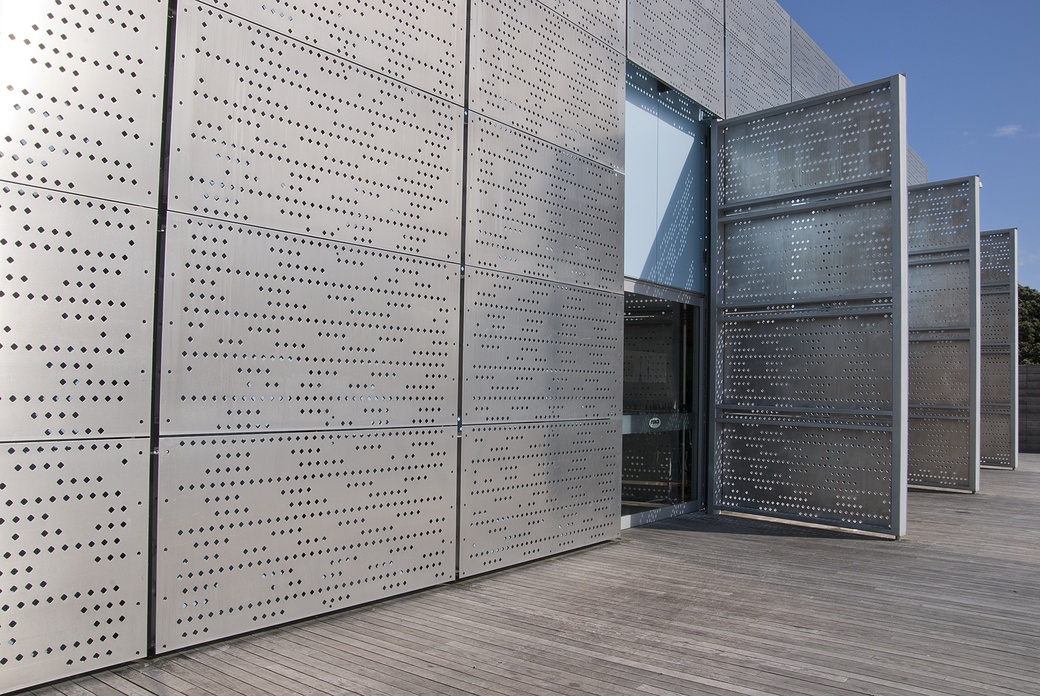
Simon Morris' Rainscreen, 2006. Photo by John Lake.
2006
Architect Ian Athfield won the contest to remodel The Dowse. He incorporated commissioned sculptural panels by artist Simon Morris to integrate art as part of the architecture. With sustainability in mind and the Dowse leading the way in green initiatives, solar panels, rain screens and a rock store become part of the building to help with renewable energy sources.

The Entrance to The New Dowse.
2007
Upon reopening, the museum was rebranded as The New Dowse and focused on living creativity through art, craft and design. With the mission of being “in tune/off beat” the New Dowse embraced diversity as a powerful niche, with a distinct approach of being community based but speaking to global issues. The new branding was accompanied by a continued focus on exhibition programming that presented challenging and meaningful content led by curator Claire Regnault. The year after reopening in 2008 photographs by Rebecca Swan called Assume Nothing: Celebrating Gender Diversity brings the timely topics of gender and sexuality to the fore, continuing the Dowse’s willingness to have important conversations. Swan’s contribution embraced the Dowse’s tradition of using photography as a way of addressing important issues.
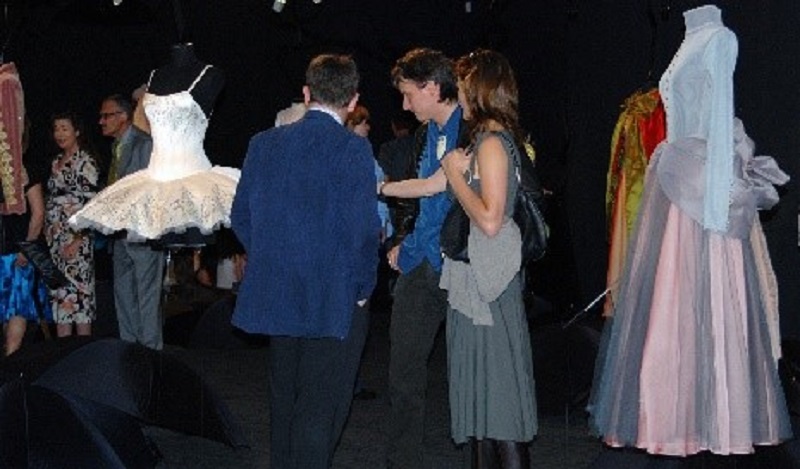
Opening of The Enchanted Forest. Photo by Amelia Handscombe.
2008
Fashion and design became an important component of The Dowse programme. From October 2007 to February 2008 the gallery presented When Philip Met Isabella, a major international exhibition toured by the Design Museum London, featuring hats by milliner Philip Treacy for the style-icon and celebrity Isabella Blow. The exhibition was a major success for the Dowse in terms of visitor numbers and reputation. It cemented the Dowse as a place to find the unexpected. In the same year, The Dowse collaborated with the Royal New Zealand Ballet, NBR New Zealand Opera and Te Ao Marama Tapui Ltd to create The Enchanted Forest – a showcase of costumes, props and sets from various productions.
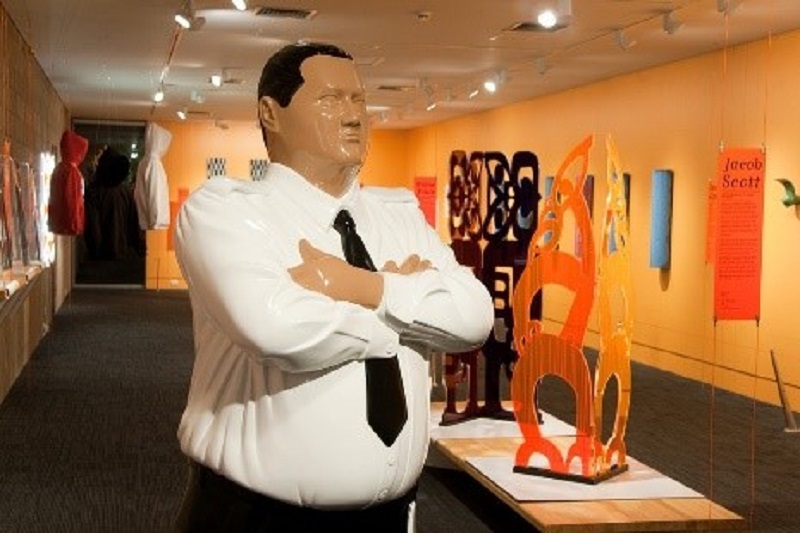
Exhibition view of Plastic Māori (2009), curated by the 2008 Blumhardt Curatorial Intern, Reuben Friend
The Blumhardt Foundation gifted $1.5 million from ceramicist Doreen Blumhardt to go into the building's development and to establish the Dowse as a centre for craft. With this gift, the Blumhardt Gallery was opened on the first floor and the Blumhardt Curatorial Internship was established. The internship gave aspiring curators much needed mentorship within the cultural industries and focused on the development of curatorial practices for decorative arts. A generation of new curators were supported through this internship, which continued for twelve years. Gina Matchitt, the final Blumhardt Curatorial intern, opened her exhibition, Ngā Hokohoko, on the eve of the global Covid-19 pandemic and a nationwide lockdown in March 2020.

The Big Day Dowse being celebrated on the redeveloped square. Photo by Mark Tantrum.
2009
Cam McCracken was appointed Director and saw an opportunity to redevelop the Dowse Square as a functioning community space rather than being "just another space for cars." Mirroring Civic Square in central Wellington, the Dowse Square was redesigned as a lively centre for Lower Hutt. Several significant public artworks were commissioned, including the much adored Fallen Robot (2012) by Ronnie van Hout which was installed during the second phase of the square redevelopment a few years later. A “slow” John Reynolds artwork, made from two indigenous tree species, tītoki and horoeka, was also developed as part of the square. The square also became a popular spot to gather water from the taps of the Waiwhetu Aquifer. A later addition of a working water fountain by artist Fiona Connor built on this water theme. The redevelopment of the Dowse Square won a New Zealand Institute of Architects award for planning and urban design.
2010s

Crowds enjoying the Big Day Dowse. Photo by Mark Tantrum.
2010
The Dowse renewed their investment in contemporary art through a major international exhibition by artist Bill Viola. A family gallery was opened to build new audiences and to continue developing an inclusive, community focus within the institution. This focus was taken a step further the following year when The Big Day Dowse, a festival with music and activities, was launched. In 2011 the Dowse's name reverted back to the Dowse Art Museum, and a new logo, based on the Simon Morris' commissioned panels, was introduced.
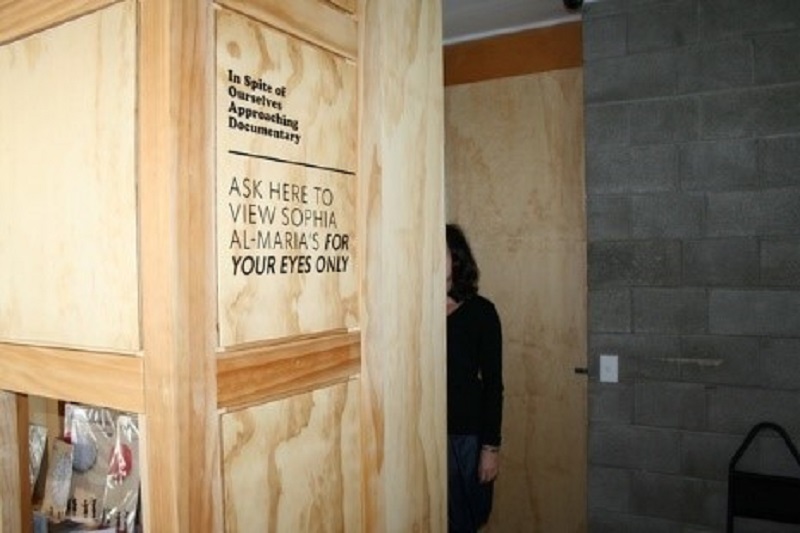
Sophia Al-Maria’s For Your Eyes Only. Source Unknown.
2012
Alongside the directors, many curators have also played a role in determining the Dowse's vision. As part of the Dowse's commitment to developing local artists' practice, Solo, a biennial exhibition featuring artists with a connection to the Wellington region, was initiated by Senior Curator Emma Bugden. In the same year, the Dowse made the headlines again with two exhibitions. The first, So it Vanishes by Mexican artist Theresa Margolles raised questions from local Māori around issues of tapu and the significance of Nuku Tewhatewha in the museum. The second in the In Spite of Ourselves exhibition resulted in The Dowse being accused by sensationalist conservative media of a "man ban" due to the inclusion of Cinderhazad, For your eyes only, an artwork by Sophia Al-Maria which was only able to be viewed by women. Both exhibitions helped The Dowse form stronger relationships with mana whenua, the Islamic Women's Council and the Human Rights Commission.
2013
The Dowse appointed Courtney Johnston as Director. She pursued a new approach to the hierarchies attached to art and craft, giving each practice equal status in the programme wherever possible. Johnston was conscious to give due recognition to overlooked artists, trying to mitigate an imbalance found in the national art history and to continue the Dowse's tradition of historical redress. Johnston also looked at publishing as a strategy for a long-term injection into local scholarship. She re-ignited the Dowse’s publishing arm which would go on to publish major works to accompany exhibitions by Gavin Hipkins, Barry Brickell and Seraphine Pick.
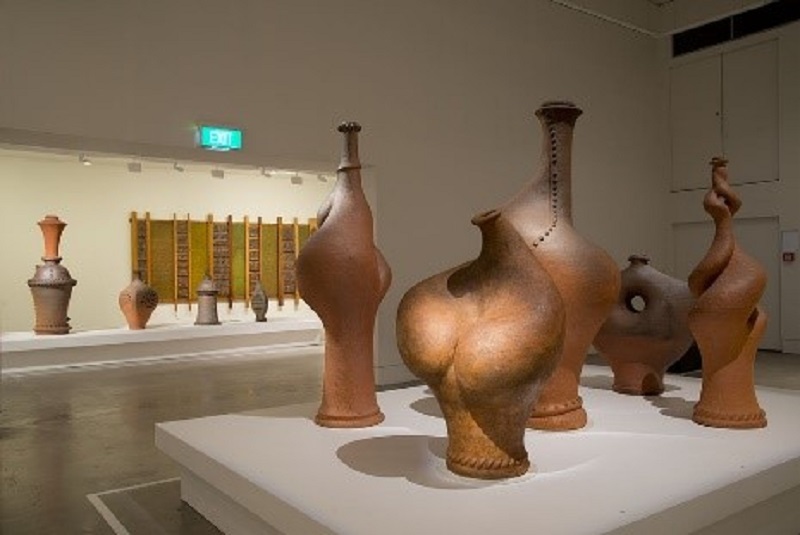
His Own Steam, a Barry Brickell survey. Photo by John Lake.
2014
Despite local opinions that the Dowse had "dipped out" of its original craft focus, the Dowse presented two significant exhibitions profiling contemporary and historical New Zealand studio craft practice. Barry Brickell: In his own steam, curated by Emma Bugden, reignited interest from craft-friendly audiences who literally embraced the exhibition, with one visitor lovingly caressing every work on display. In the same year, Wunderrūma: New Zealand Jewellery, a large-scale exhibition of contemporary Aotearoa jewellery curated by Karl Fritsch and Warwick Freeman, toured to Munich, Germany. This exhibition became the first survey of its type to show at Auckland Art Gallery, demonstrating the shifting status of craft during this decade.
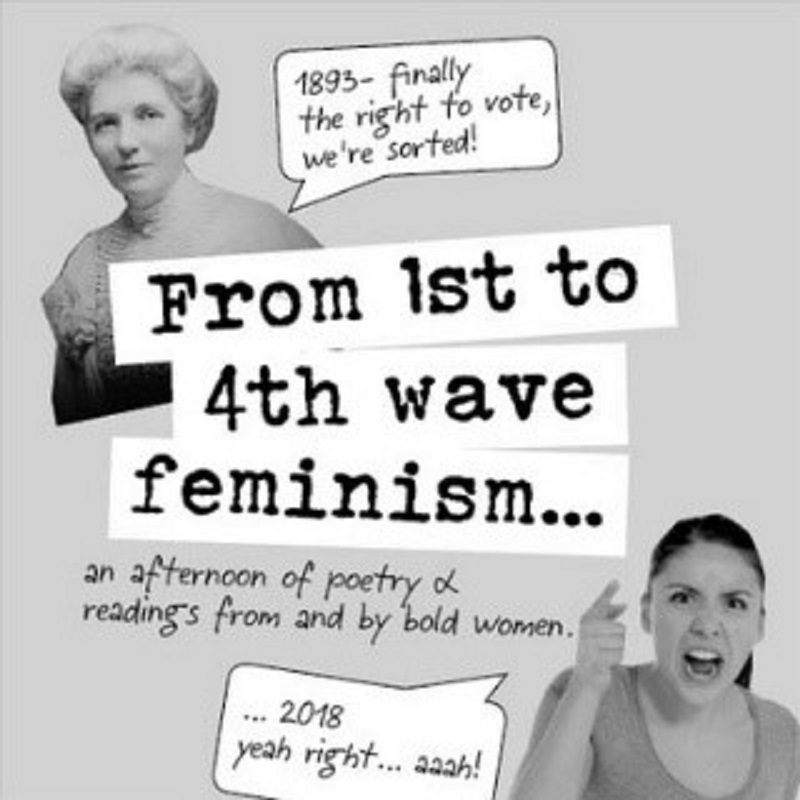
Poster from the 2016 Four Waves of Feminism Conference.
2016
The Four Waves of Feminism conference was held at The Dowse in collaboration with artist-run-space Enjoy Public Art Gallery. The Dowse's focus on feminism, mana wāhine and the art museum continued the legacy established over the course of the Dowse’s history, and would be explored further through other projects over the next few years.
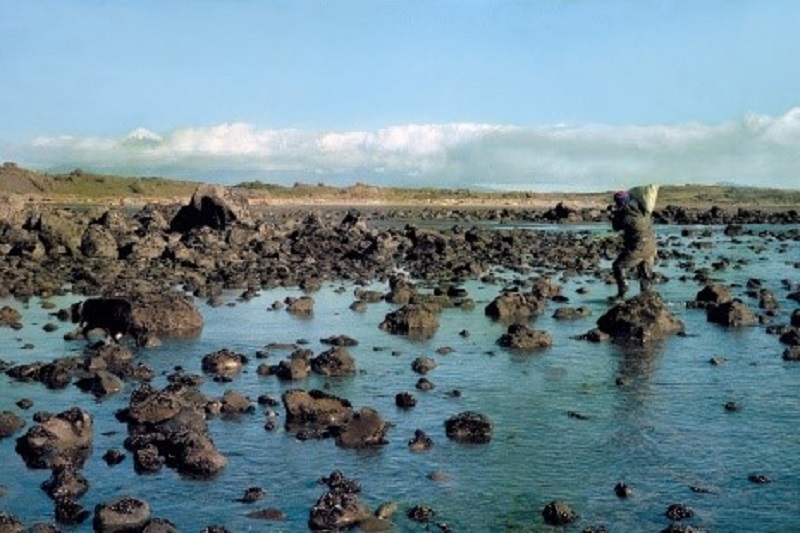
Ken Matuku collecting on Kūnene, Waiongona, 26/06/1980 from a series called Te Iwi o Te Wāhi Kore by Fiona Clark. Collection of The Dowse Art Museum, commissioned 2017 J.W.T. Adams Bequest
2017
The photographic series, Te Iwi o Te Wāhi Kore, by photographer Fiona Clark, which are part of the Dowse's collection, were used to inform some of the Te Ati Awa Treaty claim. In the early 1980s, the entire Te Iwi o Te Wāhi Kore series of 104 photographs was presented numerous times, most significantly for the Motunui – Waitara Treaty of Waitangi Claim (Wai-6) to assert iwi as kaitiaki of their ancestral land. Using contemporary photographs as evidence was an innovative approach, as at that time claims could not relate to historical events. The photographs demonstrated how the local foreshore and seabed exploitation was unlawful under the Treaty of Waitangi.
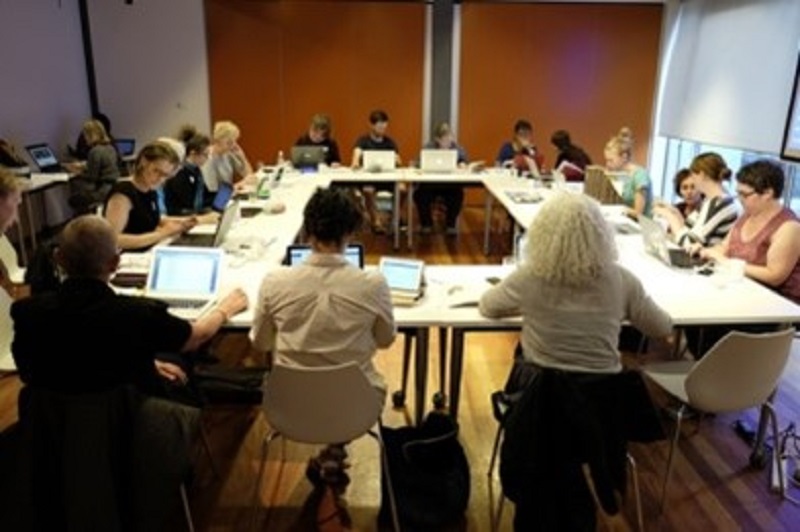
Scenes from the Edit-a-thon. Source Unknown.
2018
For the 125th anniversary of the Suffragette Movement The Dowse presented exhibitions centred on women artists and perspectives, including Embodied Knowledge and Can Tame Anything, by Senior Curator Melanie Oliver. Another strand of this commitment to profiling women within the art historical canon was a Wikipedia edit-a-thon hosted by the Dowse. The sole purpose of this event was to write entries for women artists for Wikipedia. This also highlighted Johnston’s ongoing interest in expanding the Dowse's activities into the digital space. A number of initiatives took place during her tenure, including the redevelopment of the website which pushed the medium in innovative directions and would become a reference point for Museum websites for many designers.
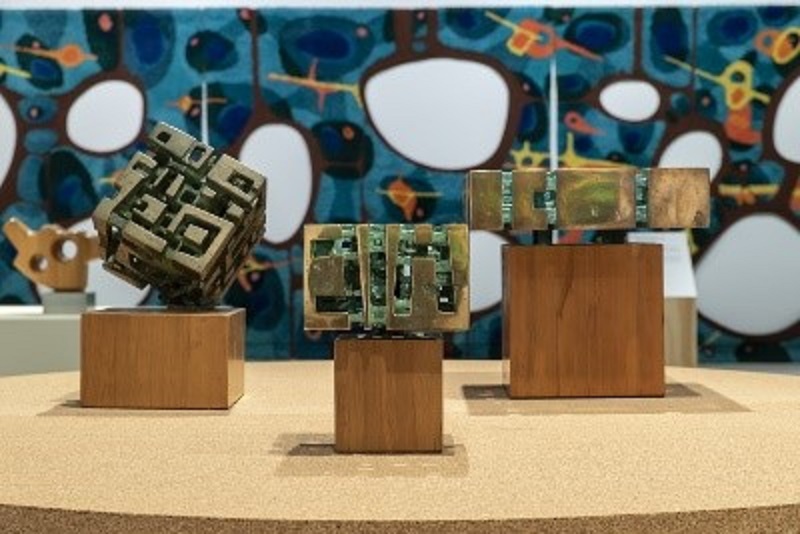
Installation view of Guy Ngan: Habitation. Photo by John Lake.
2019
Karl Chitham was appointed Director and continues an unwavering commitment to diversity in the museum programme. A major solo retrospective of the artist, architect and passionate Lower Hutt resident, Guy Ngan, is presented almost forty years after the artists’ first solo exhibition at the Dowse in 1972. Ngan crossed various creative and artistic genres, and was one of the few Asian New Zealanders to appear in this period of New Zealand art history. The multiple threads of sculpture, painting and architecture which Ngan was recognised for were celebrated by the Dowse through this exhibition and an extensive publication.
2020s
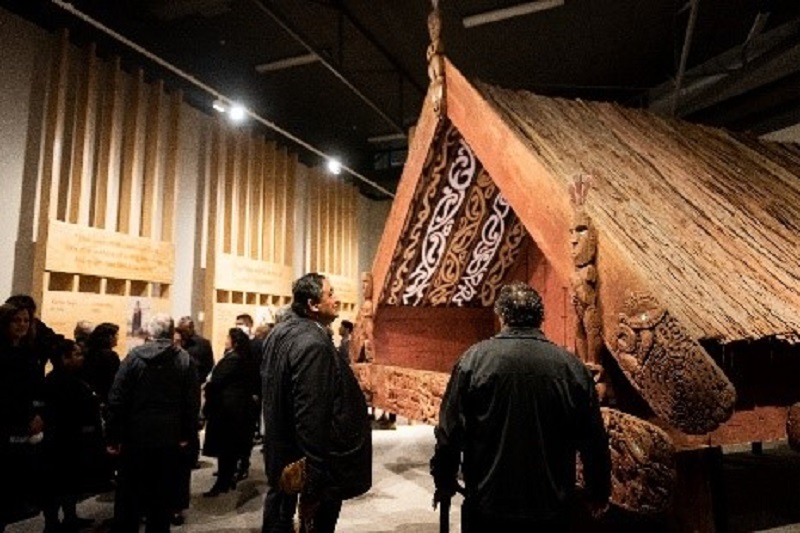
The opening of the refurbished Nuku Tewhatewha exhibition space. Photo by Mark Tantrum.
2020
The global pandemic Covid-19 forced the closure of the Dowse during a nationwide lockdown. Unable to present projects physically during this time, The Dowse moved their engagement online, focusing on how to highlight the arts to enhance wellbeing. Once reopened, The Dowse presented exhibitions which emphasised a tactile and human approach to the endurance of community and focused on representing local content. The Dowse’s first exhibition after the Covid-19 Lockdown was Can’t Be Together, which was curated from the Dowse collection and explored the notion of togetherness in its various forms. Other exhibitions in this period included Ā Mua: New Lineages of Making which followed the launch at the Dowse of the Te Papa Press publication Crafting Aotearoa, and Nikau Hindin’s exploration of aute and maramataka in Kōkōrangi ki Kōkōwai. The Nuku Tewhatewha gallery was also refurbished, with the goal of bringing the related histories to life for visitors and whānau. The opening pōwhiri included representatives from the Kingitanga hosted by mana whenua and the whānau.
2021
The Dowse undertook a year long celebration of its 50th anniversary. The Dowse Foundation commissioned The Golden Huia, three dramatic large-scale photographs, and a gold-plated sculpture moulded from the skull of an extinct huia bird by Fiona Pardington. Programming reflected not only the various legacies that the Dowse was built on, but also asked timely questions around decolonisation and what it means to be an art museum in an international climate of environmental anxiety, social upheaval and political and economic instability. Chitham built on previous Directors' endeavours and signalled a stronger focus on technology and digital platforms to make art experiences more accessible. Exhibitions such as To The Moon: Laurie Anderson and Hsin-Chien Huang in 2020 and Terminus: Jess Johnson and Simon Ward embrace the interactive capability of virtual reality while live streamed panel discussions and workshops such as Decolonising Your Puku: indigenous food sovereignty and Not Today… Can you Decolonise an art gallery? reflected the need for The Dowse to remain relevant and to reflect the things that are important as it moves into the future.